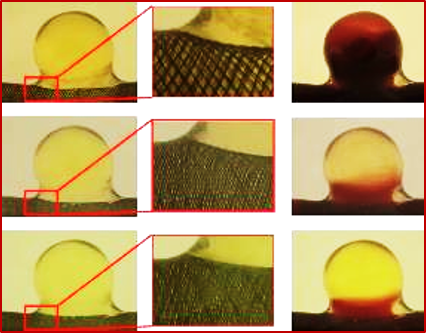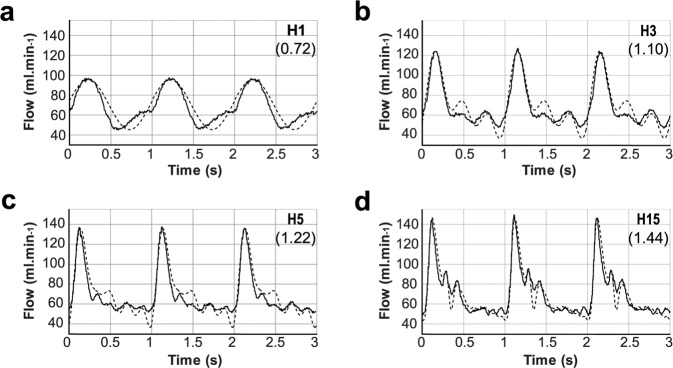Four flow patterns were applied as input flow to a silicone model of a cerebral aneurysm of 10 mm diameter and 1.1 aspect ratio, which was therefore considered a large aneurysm. A carotid artery mean flow was used. The flow patterns H1, H3, and H5 were modelled by summing the 1st, 3rd, and 5th harmonics of the reference flow. Information on the flow complexity was gathered over the first 15 harmonics and the H15 flow pattern showed less than 1% variation from the original flow pattern.
Although the minimal flow rate was similar between these patterns (47 to 52 ml.min−1), the peak flow rate increased from the H1 to the H15 patterns (97 to 146 ml.min−1); consequently, the measured pulsatility indexes for H1, H3, H5, and H15 reached 0.72, 1.1, 1.22, and 1.44, respectively. Increasing the number of harmonics included in the input signal also increased the number of peaks during one cardiac cycle, sharpening these peaks. The observed maximal acceleration of the flow rate ranged from 350 ml.min−2 to 1500 ml.min−2 for H1 to H15, respectively.



